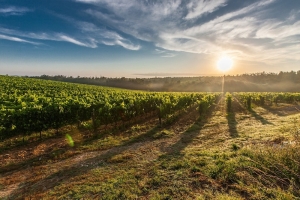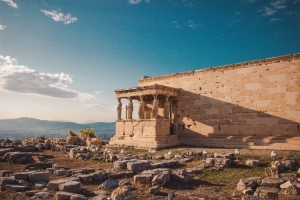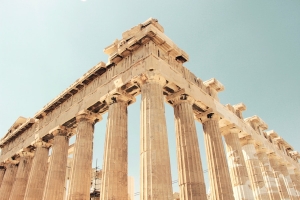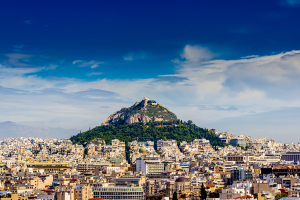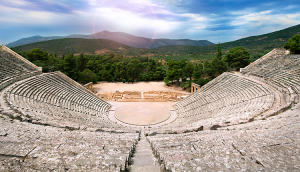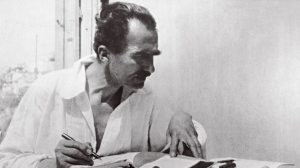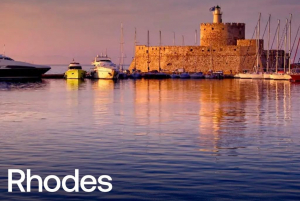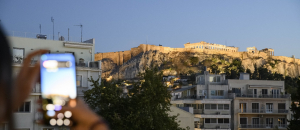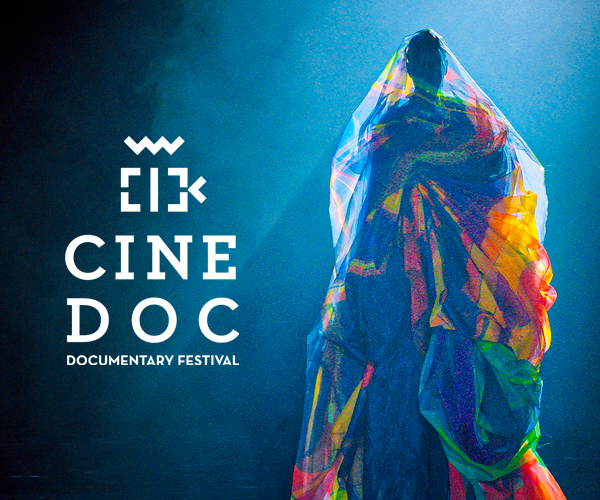XpatAthens
Greek Wines, Vines And Vineyards Of Athens And Attica
Wanderlust Greece - 72 Hours In Athens
Athens A Finalist For The 2018 European Capital Of Innovation Award
The Mayor of Athens, Giorgos Kaminis, explained that Athens being nominated for this award began with a variety of innovation programs in Athens, such as renovating old abandoned buildings and opening them to local communities.
Where To Enjoy The Most Amazing Views In Athens
The Acropolis, Athens’ eternal landmark, offers some of the most extraordinary views in the city. Standing proudly on a high hill, the Acropolis is the most visited landmark in Athens-not only for its historical importance but also for the bird’s eye views to the city below. The Acropolis may be a rather predictable choice, however, it is the most stunning location in Athens if not in the whole of Greece.
Lycabettus is the highest peak in Athens and an iconic landmark of the city. At 300 meters above sea level it offers unsurpassed views of the city; on a clear day, you can see the island of Aegina shimmering in the horizon. The top of the hill can be reached by foot, but the easiest way to get there is via the cable car that runs every half hour from the station on Aristippou street. Mount Lycabettus is home to the picturesque chapel of St. George, a restaurant, and an open air theater. The views from the hill are particularly amazing at night time!
Named after the monument of Philoppapos that was discovered in the area, this hill captures Greek history, ancient and modern in a single image. Walking up the marble paved path and you will pass the tiny church of St. Dimitrios Loumbardiaris and The Shrine of the Muses which is cut into the rock just below the hill’s summit. From the top of the you’ll be able to take some amazing pictures of the Parthenon, the Odeon of Herodes Atticus, the Acropolis Museum, and the Athens Observatory. The hill is surrounded by a beautiful park and is a favorite kite drifting spot on the Greek Kathara Deytera - Clean Monday holiday.
Athens & Epidaurus Festival 2019 Ticket Pre-Sale Has Begun
More Specifically
Online Purchase: www.greekfestival.gr & www.ticketmaster.gr
For groups (20+ persons): 210 3222720 & tickets@greekfestival.gr
For persons with disabilities: 210 3221897 & tameia@greekfestival.gr
Athens & Epidaurus Festival Box Offices:
Panepistimiou 39 (Stoa Pesmazoglou) Monday to Friday 10:00-16:00, Saturday 10:00-15:00
Odeon of Herodes Atticus: Monday to Sunday 10:00-14:00 & 18:00-21:00 on performance days
Ancient Theatre of Epidaurus: Monday to Thursday 10:00-13:00 & Friday to Saturday 10:30-21:30
For more information about this year's events, please visit: Athens & Epidaurus Festival
Epidaurus Theater To Globally Live-Stream Ancient Play For The First Time
This content has been prepared by Codico Lab with information from amna.gr
Greece Drops Face Mask Rule For Indoor Spaces
Under the revised guidelines, as of June 1, masks will no longer be mandatory in indoor areas including at supermarkets, restaurants, shops, malls, hair salons, etc.
The minister added that masks will also not be necessary for means of transport with numbered seats including airplanes, intercity trains, and KTEL buses. The lifting of the measure also concerns employees in all the aforementioned areas.
Click here to read about how to get vaccinated for COVID-19 in Greece.
Where mask-wearing will remain mandatory
Mask-wearing will remain mandatory in hospitals, senior care homes, and when using public means of transport (buses, trolleys, electric railway, metro, and tram).
The health minister added that the country’s Covid-19 committee of experts will decide in the following days if mask-wearing will remain mandatory in schools, universities and when traveling on ferries to the islands.
To read this article in full, please visit: news.gtp.gr
Greek Author Kazantzakis’s Last Novel Published 75 Years Later
The novel, titled “Aniforos” (“Uphill”, in free translation), hit the bookstores in Greece by publishing house Dioptra, following a comprehensive publishing rights deal with Kazantzakis’s descendant, Niki Stavrou, who is the copyright owner of the author’s works and director of Kazantzakis Publications.
The manuscript had been kept at the Kazantzakis museum, in the author’s home village of Mirtia, just outside Heraklion, Crete, since its rediscovery.
Nine-time Nobel nominee
Nikos Kazantzakis is the most translated Greek contemporary author, and he is widely considered a giant of modern Greek literature.
A novelist, poet, playwright, journalist, philosopher, and politician, Kazantzakis was born and raised on Crete but traveled around the world and lived in several European cities, leading a truly cosmopolitan life.
His work includes novels, short stories, plays, travel logs, memoirs, and philosophical essays, written between 1906 and his death in 1957.
Kazantzakis was nominated for the Nobel Prize in Literature nine times, for a total of 14 different nominations. In the year of his passing, the Cretan author famously lost the prestigious prize to Albert Camus by one vote.
Kazantzakis’s last unpublished novel
“Aniforos” was his last novel, written right after his world-famous masterpiece “Zorba the Greek” (1946). He wrote it around the time that he departed for the UK on what was meant to be his last journey.
Brimming with autobiographical references, as the author reflects on the sad experience of World War II, which he endured firsthand, “Aniforos” is separated into three parts: Crete, England, and Loneliness.
Dioptra said in an earlier note that this work was Kazantzakis’s answer to the criticism he had received that the pain and destruction suffered by Greece during the German occupation was missing from “Zorba the Greek.”
To read this article in full, please visit: greekreporter.com
Greece to Launch ‘Rhodes, What You Love is Here’ Campaign
As part of efforts to restore Rhodes’ reputation and encourage tourism to the island after the devastating fires last month, the Greek Tourism Ministry and the South Aegean Region announced that they had teamed up with advertising company Ogilvy for the launch of an international marketing campaign dubbed “Rhodes, What You Love is Here”.
The campaign was announced after a meeting on Wednesday between Tourism Minister Olga Kefalogianni, South Aegean Regional Governor Giorgos Hatzimarkos, Greek National Tourist Organization (GNTO) Secretary General Dimitris Fragakis, and Ogilvy executives.
The news comes a day after Greek Prime Minister Kyriakos Mitsotakis announced on UK television free weeklong holidays for those who were affected by the destructive fires in July.
“For all those whose holiday was cut short as a result of wildfires, the Greek government in cooperation with local authorities will offer one week of free holidays on Rhodes, next spring, next fall, so that we make sure they come back to the island and enjoy its natural beauty,” Mitsotakis said.
To read this article in full, please visit news.gtp.gr
City Of Athens: What's Happening In July & August At The Maria Callas Museum
Full Moon in July and August
Free Admission
Dates:
- Sunday, July 21
- Monday, August 19
The Maria Callas Museum, in collaboration with the historic Athens Conservatoire, invites you to two magical musical evenings. Enjoy free admission on July 21 from 8:00 PM to 11:00 PM and August 19 from 7:00 PM to 11:00 PM. Sip on an aperitif from the museum café, explore the exhibits, and immerse yourself in the life and legacy of the iconic opera diva, Maria Callas.
On the third floor, be captivated by students from the Athens Conservatoire performing arias and duets, creating an unforgettable musical experience. Revel in the beauty of art and melodies under the full moon, with the majestic Acropolis as your backdrop.
These events highlight the ongoing collaboration between the Maria Callas Museum and the Athens Conservatoire—where Maria Callas began her studies in 1939—aiming to foster the museum as a hub for nurturing and showcasing new musical talents.
Program Director: Philippos Tsalahouris, Director of Music Schools, Athens Conservatoire.
More Information: info@mariacallasmuseum.gr
Book Your Free Ticket: Limited availability
Creative Fun for Kids: La Mia Maria
Happening for Children of All Ages
Every Saturday and Sunday from 10:00 AM – 12:00 PM
Let your child’s creativity soar with "La Mia Maria." Every weekend in July and August, from 10:00 AM to 12:00 PM, kids can design their own souvenir postcards featuring Maria Callas' portrait using stencil techniques. This engaging activity introduces children and adults alike to the legendary opera star through a colorful and imaginative artistic process. Leave with a unique memento of your special encounter with Maria Callas.
Participation: Free, no reservation required.
Discover the Museum: Free Guided Tours in English
Dates:
- Wednesday, July 24
- Wednesday, July 31
- Wednesday, August 21
- Wednesday, August 28
Tour Times: 12:00 PM (Duration: 50 minutes)
Book Your Visit:
- Phone: +30 210 44 04 204
- Email: info@mariacallasmuseum.gr
Guided Tour: Free

